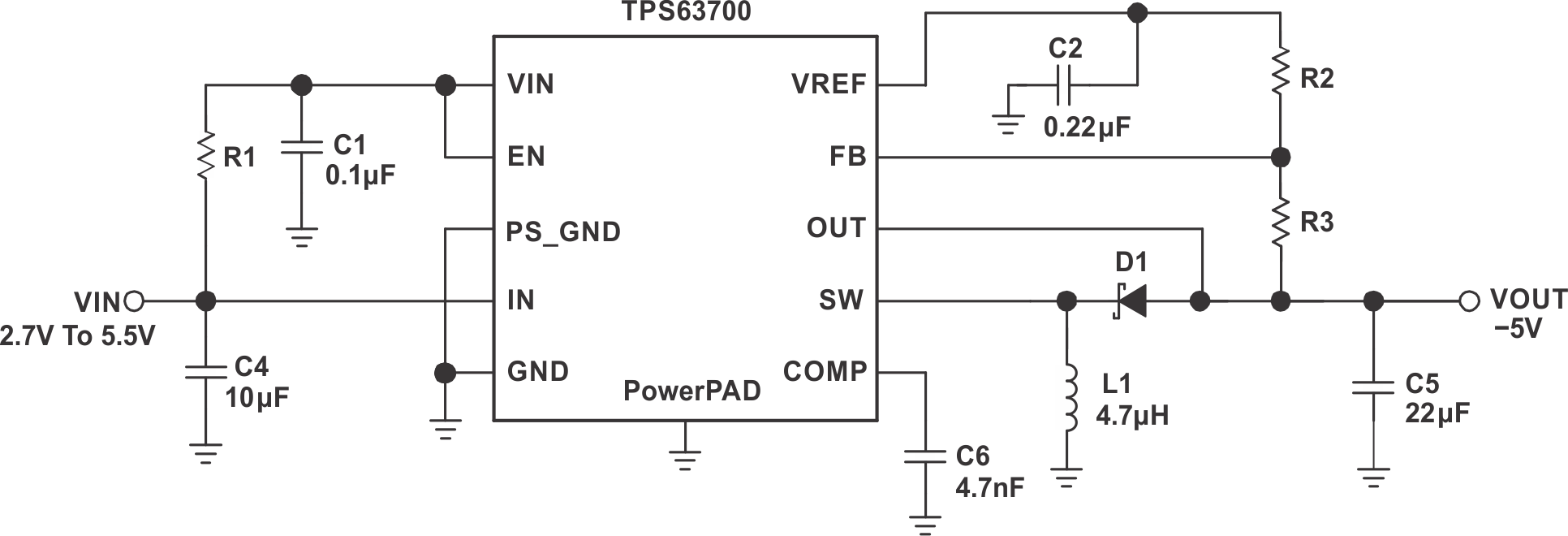SPVA023 July 2025 LM25184 , LM2611 , LM27761 , LM5158 , LMR33640 , TLV171 , TPS63700
2.2 Generate Negative Power Supply Using An Inverter Regulator
The second way to generate a negative output voltage from a positive power supply is to use an inverter regulator. The topology of the inverter is shown in Figure 2-4. In the first-time interval, Q1 switches on and Q2 switches off, and the current of the inductor increases under input voltage stimulation. The load is powered by output capacitor C. In the second time interval, Q1 switches off and Q2 switches on, the inductor inverse charge output capacitor C by Q2 switches. The output voltage has a negative power supply.
 Figure 2-4 Topology of Inverter Converter
Figure 2-4 Topology of Inverter ConverterWhen Q1 switches on, the average current of inductor L is equal average input current. When Q2 switches on, the average current of the inductor equals the output current. Assume the efficiency of circuit is ?, the output voltage amplitude is Vo and input voltages are Vin, then the average current of inductor is shown in Equation 3
The maximum voltage for Q1 and Q2 is Vin-Vo. Remember that Vout in here is negative voltage. Then the customer can configure peak current of inductor to 1.2 times of average current. The values of inductor is shown in Equation 4
Here, f is switching frequency, D is duty cycle and shown in Equation 5
With all previously mentioned equations, designer can design an inverter converter to meet specific application requirements.
TI has several inverter regulators with 300mA-1A output current capacity and various input voltage range can meet customer most actual applications. Among these inverter regulators, TPS63700 is a 2.7- 5.5V input voltage and -1.213-15 output adjustable negative power supply with maximum 360mA output current. 3mm × 3mm package and 1.4MHz switching frequency makes TPS63700 is a compact design to generate a negative power supply from positive power supply and can meet most application requirements. The typical application as Figure 2-5 shows.
 Figure 2-5 Typical Application Circuit of
TPS63700
Figure 2-5 Typical Application Circuit of
TPS63700The output voltage of TPS63700 can be configured by using Equation 6
The input current and output current of the converter is discontinued. As a result, the inverter converter generally has a larger ripple and requires a good filter in input and output. The second issue is there are less inverters to meet miscellaneous customer applications.